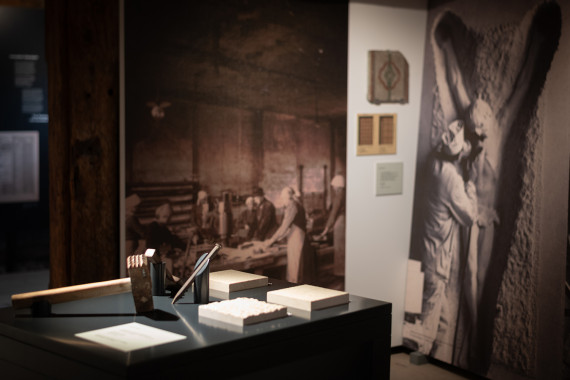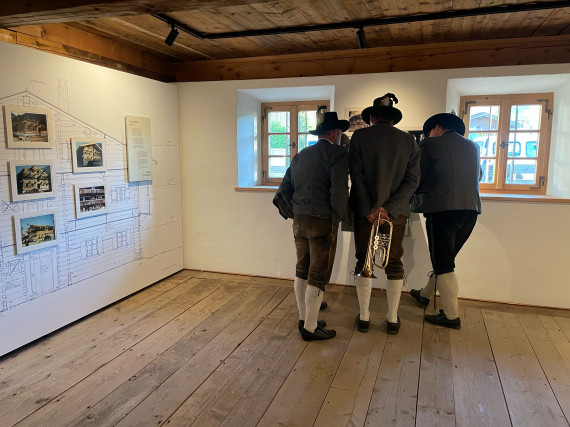Marble Industry
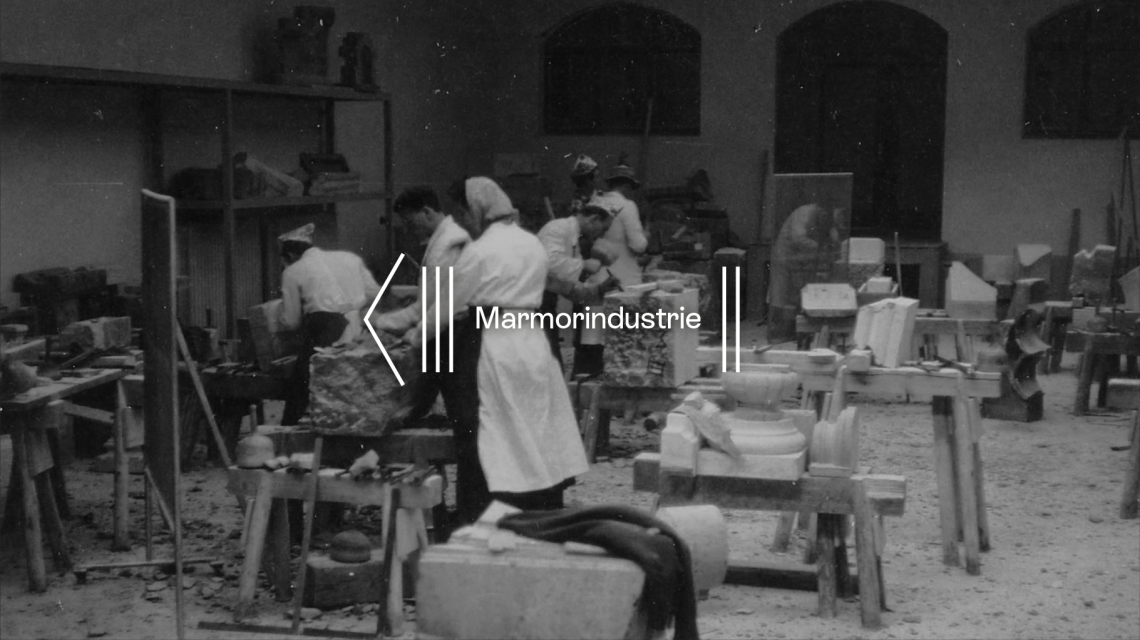
Decorative façades and mosaics from Kiefersfelden adorned buildings throughout Europe
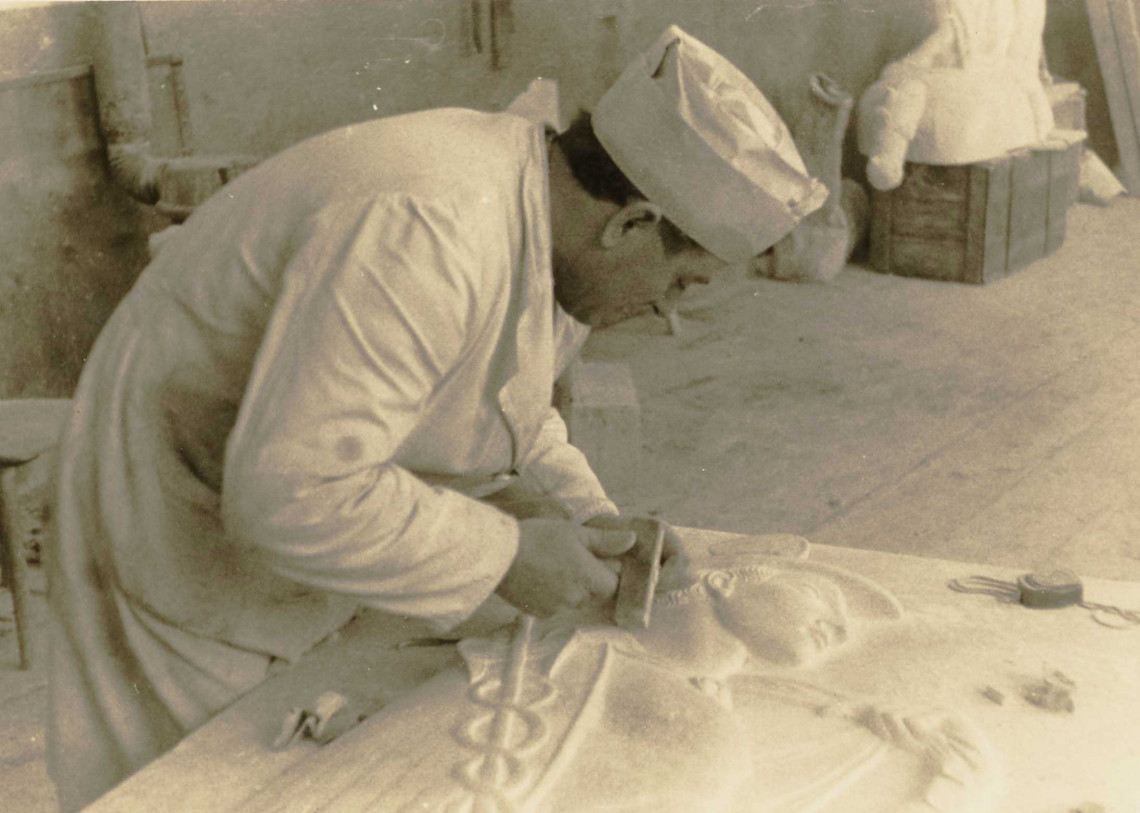 A sculptor at work on a relief.
A sculptor at work on a relief.
Photo: Around 1960, Industriemuseum Blaahaus
For almost 120 years, ‘Marmorindustrie Kiefer AG’ manufactured products made of natural stone and served customers all over the world. The factories produced magnificent façade decorations, colourful mosaic patterns, entire fountains and important monuments such as the sarcophagus in which Chancellor Otto von Bismarck was buried. Within a few years of its foundation in 1883, the small marble factory developed into Germany's largest marble works with over 1,000 employees, and it was not until 1998 that operations ceased.
The exhibition explains the quarrying and processing of natural stone and presents the working world of stonemasons and sculptors. At the same time, you can also get an impression of the colourful variety of products that were created in the Kiefer marble works.
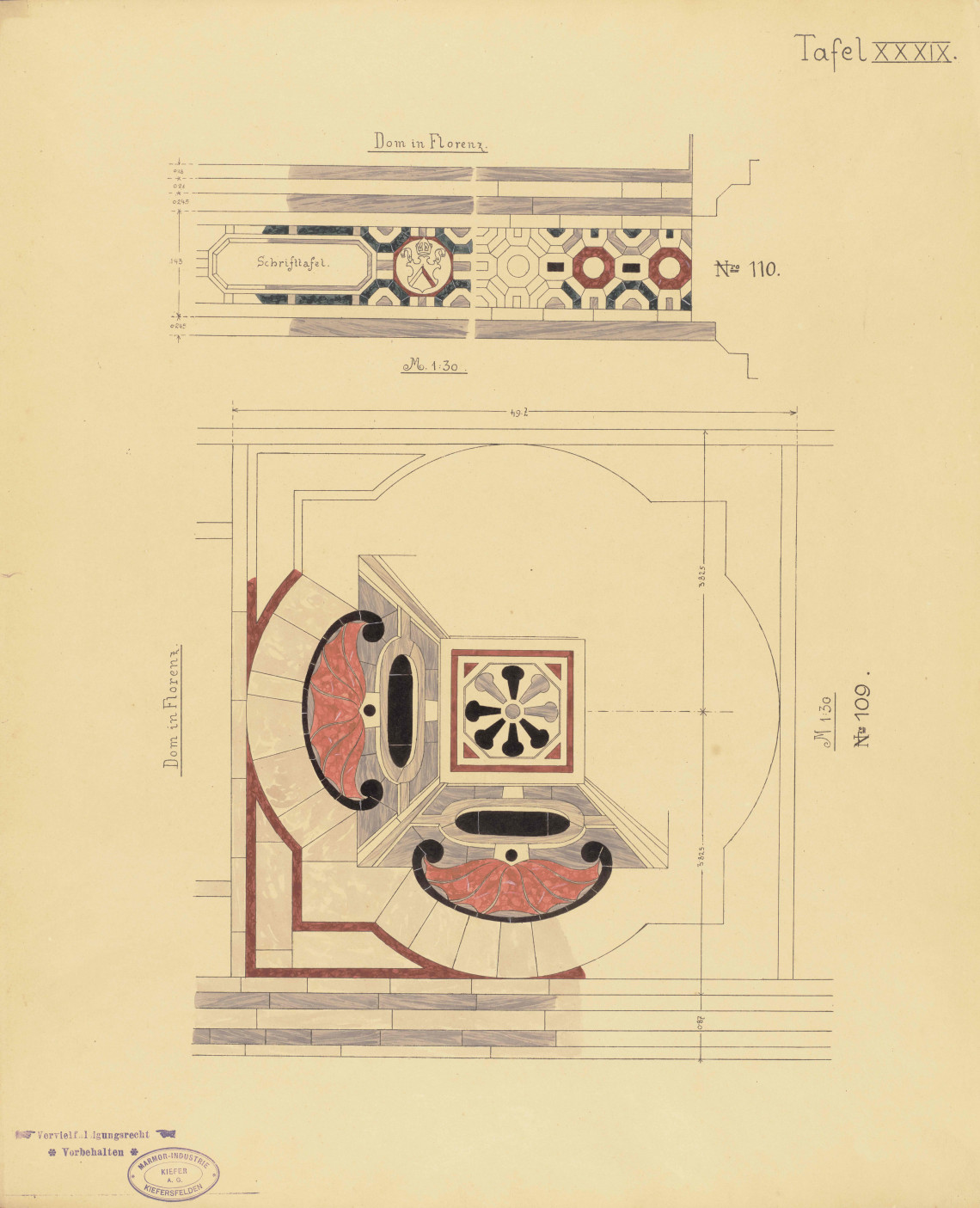 The sample albums with drawings of floors from Italian churches served as inspiration and templates for customers.
The sample albums with drawings of floors from Italian churches served as inspiration and templates for customers.
© Industriemuseum Blaahaus
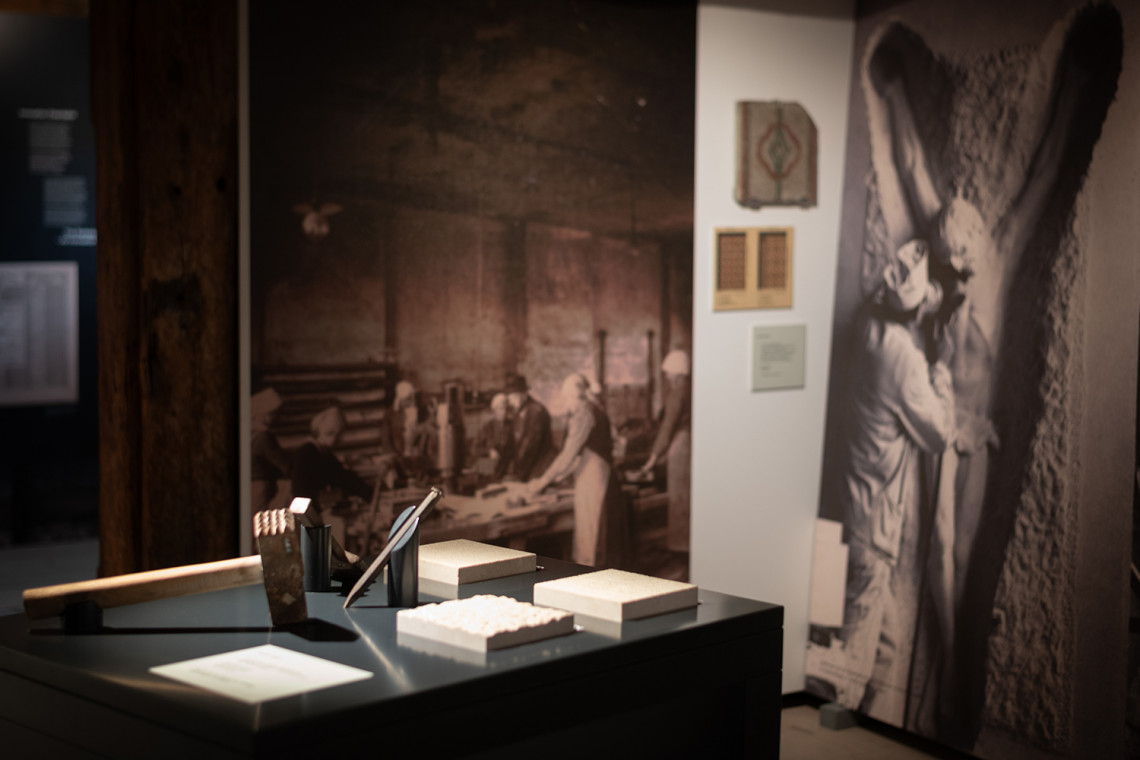 At this interactive unit, you can compare the surfaces of marble stones that have been worked with different tools.
At this interactive unit, you can compare the surfaces of marble stones that have been worked with different tools.
© Linus Rapp
